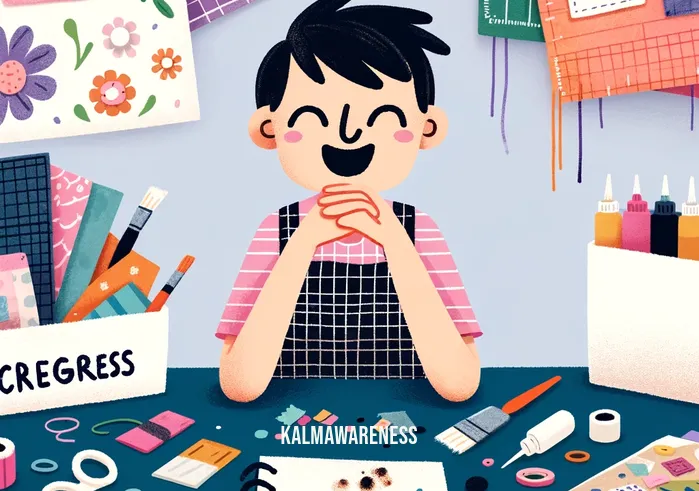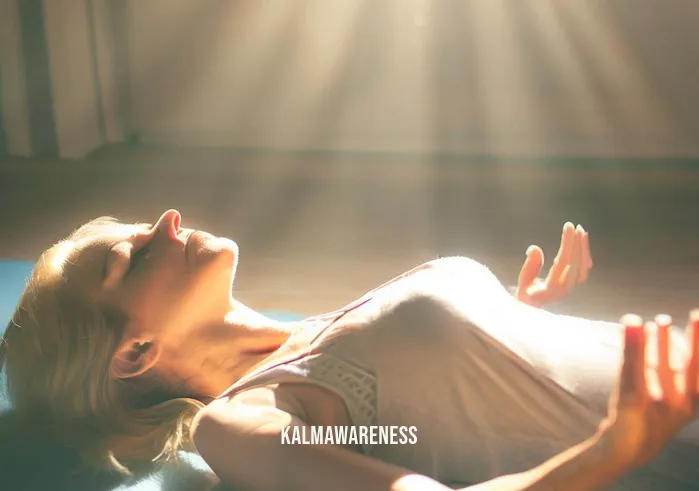How to Watch Your Thoughts: An Introduction to Mindful Awareness
As we tread the path of life, our thoughts shape our perception, emotions, and actions. Yet, so many of us remain oblivious to the constant chatter of our minds. How to watch your thoughts becomes a critical skill in the quest for mindfulness and improved mental well-being. This segment provides an overview of the journey to watching our thoughts with intent and clarity. In the chapters that follow, we will delve deeper into the varied techniques and practices that lead to this self-awareness.
The Power of Thought Awareness
The human mind is ceaselessly active, continuously crafting narratives, judgments, and memories. The power of becoming aware of our thoughts lies in the ability to not be enslaved by them. When we learn to observe thoughts without attachment, we can discern the difference between constructive thought patterns and those that serve to foster negativity. The concept of habitual thinking addresses the patterns we frequently slip into, often unconsciously. By recognizing and understanding these patterns, we gain the ability to alter our reactions and responses.
Mindfulness: The Gateway to Thought Observation
Mindfulness is the act of being completely present in the current moment, allowing us to observe our thoughts without judgment. The essence of mindfulness is captured beautifully in the phrase, “life is available only in the present moment”. Mindfulness practices range from simple breathing exercises to structured meditation techniques. Programs like the Penn Mindfulness Class provide structured guidance for those embarking on their mindfulness journey.
Techniques and Practices: A Sneak Peek
While many associate mindfulness with seated meditation, it encompasses a vast array of practices:
Micromeditating: A practice that revolves around short, frequent meditation sessions, allowing even the busiest individuals to incorporate mindfulness into their day. Learn more about micromeditating here.
Meditation in Motion: Engaging in mindful physical activities, such as mindful martial arts or mindful hiking, where movement and awareness merge.
Ancient Practices: Many ancient cultures have their meditation techniques. For instance, ancient African meditation practices offer unique insights into thought-watching and mindfulness.
The Broader Picture: Cognitive Behavior and Well-Being
Understanding our thought processes is intrinsically linked to cognitive behavior. By recognizing and shifting detrimental thought patterns, one can significantly enhance mental health. This journey is also interwoven with understanding our inside-out personality types and the role of mindfulness in our daily actions. Further, mindfulness practices such as gratitude yoga enhance holistic well-being, emphasizing the interconnectedness of mind, body, and spirit.
Setting The Stage: A Journey Ahead
As we delve deeper into how to watch our thoughts, it’s crucial to approach the journey with an open heart and mind. Embracing self-awareness requires patience and practice. We’ll explore resources like mindfulness books for teens, understand the importance of meditation stories for students, and even delve into specific areas such as meditation for menopause. We’ll also uncover the potential of integrating mindfulness in professional settings with insights from the renewed mind employee portal, and seek guidance from experts like meditation consultants.
To truly grasp the art of watching our thoughts, it’s vital to immerse oneself in the world of mindfulness and its diverse practices. In the next segment, we’ll dive into the intricacies of specific techniques, providing a comprehensive guide for those ready to embark on this transformative journey. So, if the idea of cultivating a mindful muscle intrigues you or if you’re curious about the mindful miracles that can manifest in your life, continue reading. The path to self-awareness and holistic well

Techniques and Practices: Mastering the Art of Watching Thoughts
Watching our thoughts is more than just a fleeting concept. It’s a powerful tool in the world of mindfulness, cognitive behavior, and mental health. As we journey further, we’ll uncover techniques and delve deeper into understanding the essence of how to watch your thoughts.
The Dynamic Intersection of Mindfulness and Cognitive Behavior
Understanding and observing our thoughts is the nexus where mindfulness meets cognitive behavior. The process not only helps in cultivating self-awareness but also in altering deep-rooted, sometimes harmful, thought patterns. For example, meditation in motion is not just about physical activity; it is a potent tool to harness the wandering mind and cultivate awareness.
The Essential List: Techniques to Watch Your Thoughts
Mindful Martial Arts: A harmonious blend of physical discipline and mental clarity, mindful martial arts trains the mind to focus, teaching us to watch thoughts as they come and go.
Micromeditating: Short bursts of focused mindfulness, micromeditating can be practiced anywhere, making it a practical choice for busy lifestyles.
Mindful Hiking: Nature combined with mindfulness. Mindful hiking encourages the practitioner to be present, observing both the external environment and internal thought processes.
Mindfulness en Español: Embracing cultural perspectives can offer new techniques and insights. Exploring mindfulness practices like mindful en español adds depth to the journey.
Navigating Thoughts: A Comprehensive Table
| Technique | Objective | Link to Explore |
|---|---|---|
| Micromeditating | Cultivate awareness in short bursts | Discover More |
| Mindful Martial Arts | Merge physical discipline with mental clarity | Explore Now |
| Mindful Hiking | Connect with nature and self | Learn Here |
| Ancient African Meditation | Delve into ancestral wisdom | Read On |
| Gratitude Yoga in Princeton | Merge thankfulness with mindfulness | Grasp the Essence |
Embracing Modern Mindfulness Adaptations
While the ancient practices hold invaluable wisdom, contemporary interpretations and adaptations of mindfulness are equally potent. For instance, the inside-out personality types model presents a modern perspective on self-awareness and thought-watching. As we evolve, so do our techniques, providing diverse ways to master the art of watching our thoughts.
A Glimpse Into the Next Segment
As we continue on this path of self-discovery, the next chapter will offer a deeper dive into the intertwining worlds of cognitive behavior, mindfulness, and their combined impact on our well-being. From the importance of consulting a meditation consultant to the wonders of practices like meditation for menopause, prepare to expand your horizons further. So, if you’re eager to continue refining the skill of watching your thoughts and to understand the broader implications on mental health and well-being, continue reading. The journey is bound to be enlightening.

Finding Strength and Solace: How Watching Our Thoughts Inspires Hope
In the realm of mindfulness, how to watch your thoughts transcends a mere technique—it becomes a beacon of hope. By observing our thoughts, we harness the power to reshape them, fostering positivity and resilience. This chapter unravels the tapestry of hope interwoven with the act of watching our thoughts, showcasing stories, quotes, and insights that inspire transformation.
The Power of Perspective: Shifting Our Internal Dialogue
Observing thoughts is akin to holding a mirror to our internal dialogue. Emma, a participant in the Penn Mindfulness Class, shares her experience, “Initially, the sheer negativity of my thoughts was overwhelming. But as I learned to watch without judgment, I began to discern patterns and found the strength to reframe my thoughts.” This shift in perspective is integral to personal growth.
Quotable Insights: Luminous Words of Wisdom
The world of mindfulness and self-awareness has been graced with luminaries who have shared their wisdom. These words resonate deeply when contemplating how to watch our thoughts:
- “Between stimulus and response, there is a space. In that space is our power to choose our response.” – Viktor E. Frankl
- “The mind is everything. What you think, you become.” – Buddha
- “Do not let the behavior of others destroy your inner peace.” – Dalai Lama
- “Watch your thoughts; they become words. Watch your words; they become actions.” – Lao Tzu
- “Your worst enemy cannot harm you as much as your own unguarded thoughts.” – Buddha
Stories of Transformation: Real-Life Inspirations
A Renewed Sense of Purpose: When Martin underwent a personal crisis, he felt adrift. It was through a renewed mind employee portal that he chanced upon mindfulness. Watching his thoughts, he understood the cyclical negativity he was entrapped in and began his journey towards healing.
The Art of Being Present: Clara, an ardent practitioner of meditation in motion, beautifully encapsulates the essence of living in the present. She notes, “By watching my thoughts during mindful activities, I’ve discovered the peace that arises from simply being in the ‘now’.”
Embracing Cultural Wisdom: John, having explored ancient African meditation techniques, shares, “By connecting with ancestral knowledge, I’ve learned not just how to watch my thoughts but also to value the wisdom they hold.”
Moving Forward: Nurturing a Hopeful Mindset
Our thoughts are potent, capable of creating both rapture and despair. By embracing practices like mindful miracles and learning how to watch our thoughts, we create a hopeful narrative, nurturing a mindset that views challenges as opportunities for growth.
Peering Ahead: A Deep Dive Into Well-being
The journey of watching our thoughts is profound and transformative. In the next segment, we’ll delve into the holistic impact of this practice on our well-being, from its effect on stress and anxiety to its ability to foster joy and contentment. If the idea of realizing a life filled with equanimity, peace, and purpose resonates with you, continue reading. The insights ahead promise to be both enlightening and empowering.

Understanding the Layers: An In-depth Look at Watching Our Thoughts
Delving deeper into the art of mindfulness, we recognize that the process of learning how to watch your thoughts isn’t a singular, linear journey. Instead, it’s layered with nuances, techniques, and intricacies. By breaking these elements down, we can gain a comprehensive grasp on the transformative potential of this practice.
The Anatomy of Thought-Watching
To truly master the art of observing our thoughts, we need to understand its components. Here’s a breakdown:
Observation vs. Reaction: Before diving into mindfulness, many of us are reactive. Thought-watching involves transitioning from knee-jerk reactions to detached observation.
Temporal Awareness: This pertains to recognizing whether we’re ruminating on the past, anxiously anticipating the future, or truly present in the moment.
Emotional Undercurrents: Often, our thoughts are accompanied by emotional responses. Identifying these can provide deeper insights into our internal narrative.
Thought Patterns: As explored in the habitual thinking definition, we tend to have recurring patterns in our thoughts, which can be constructive or detrimental.
Techniques to Cultivate Mindful Observation
Harnessing the power of thought-watching necessitates integrating certain techniques into our daily lives. Here’s a curated list:
Focused Breathing: At its core, even something as simple as focused breathing can be instrumental. It roots us in the present, making observation easier.
Guided Meditations: For beginners, guided sessions, especially from seasoned meditation consultants, can be incredibly helpful.
Mindful Activities: Engaging in practices like mindful hiking or mindful martial arts seamlessly melds activity with mindfulness.
Journaling: Putting our thoughts on paper can be both therapeutic and revelatory, showcasing patterns and insights we might otherwise overlook.
Benefits of Thought-Watching: A Quick List
Understanding the ‘why’ behind watching our thoughts can amplify our commitment to the practice. Here are some transformative benefits:
Improved Mental Health: By identifying and mitigating negative thought spirals, we can bolster our mental well-being.
Enhanced Self-Awareness: This practice paves the way to understanding ourselves on a deeper level, fostering personal growth.
Better Decision Making: With a clear, non-reactive mind, decision-making becomes more thoughtful and informed.
Stress Reduction: By living in the present and avoiding undue rumination or anticipation, our stress levels can significantly diminish.
Overcoming Challenges: Tips and Tricks
Like any profound journey, the path to mastering thought-watching comes with its set of challenges. Here’s how to navigate them:
Consistent Practice: Rather than sporadic deep dives, consistent, daily mindfulness practices yield better results.
Seeking Guidance: Leveraging resources, be it mindfulness books for teens or workshops, can provide structure to our endeavors.
Patience: The art of watching thoughts isn’t acquired overnight. It requires patience and perseverance.
Community Support: Engaging in group meditations or joining mindfulness communities can be motivating and enlightening.
Looking Ahead: The Culmination of Our Journey
As we approach the final chapter of this exploration, we’ll synthesize everything we’ve learned, offering a holistic perspective on how to watch our thoughts and its transformative power. From practical techniques to the profound impact on our well-being, the upcoming segment promises to tie everything together, providing a comprehensive guide for those eager to embark on this life-changing journey. If you’re keen on realizing the zenith of mindfulness and self-awareness, continue reading. The finale is bound to be both insightful and inspiring.

Reflecting on the Journey: The Art of Watching Our Thoughts
From the foundational principles to the intricate nuances, our expedition into understanding how to watch your thoughts has been transformative. As we stand at the crossroads of reflection and application, let’s encapsulate our learnings and contemplate the way forward.
Glimpses from Our Expedition
Our voyage began with recognizing the sheer power that resides in observing our thoughts. We delved into the relationship between mindfulness and cognitive behavior, unveiling the intertwined paths of self-awareness, growth, and mental health. Through stories, techniques, and inspirational quotes, we unearthed the myriad facets of watching our thoughts, grasping both its depth and expanse.
The Transformative Impact: A Recap
Empowered Choice: As Viktor E. Frankl profoundly stated, between stimulus and response, there exists a space. In that space, we hold the power to choose our response. Watching our thoughts amplifies this space, granting us greater control over our reactions.
Enhanced Self-awareness: By observing our internal narratives, we not only understand ourselves better but also pave the way for personal growth and transformation.
Mindful Living: Embracing practices like meditation in motion and mindful martial arts has underscored the beauty of living in the present moment, fostering peace and joy.
Applying Our Knowledge: Real-World Scenarios
Managing Stress: The next time you’re overwhelmed, take a pause. Watch your thoughts without judgment. Use the techniques you’ve learned to calm the mind and respond rather than react.
Building Relationships: Engage in mindful communication, watching your thoughts before they translate into words. This fosters empathy, understanding, and strengthens bonds.
Personal Growth: Whether you’re setting goals or reflecting on life choices, watching your thoughts can provide clarity, ensuring you’re aligned with your true desires and values.
A Heartfelt Thank You
To our esteemed readers, your engagement and thirst for knowledge have made this journey immensely rewarding. We’re deeply grateful for your time and trust in navigating the intricate tapestry of watching our thoughts together.
Explore, Discover, Transform
We’ve just scratched the surface. The world of mindfulness is vast, and the path to self-awareness is continuous. We encourage you to revisit previous sections for reinforcement, and for those eager beavers, our meditation stories for students offers profound insights into the myriad facets of mindfulness. Dive deeper, seek more, and continue this transformative journey.
Until Next Time
Stay curious, stay mindful. We promise to return with more enlightening content, guiding you further on the path of self-awareness and holistic well-being. Embrace the art of watching your thoughts, and let it be the beacon guiding your path.





